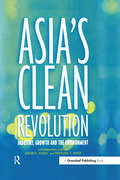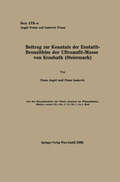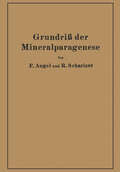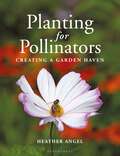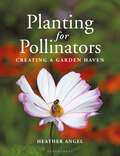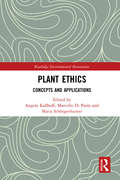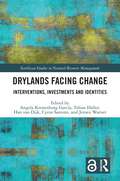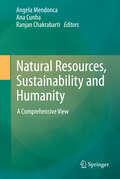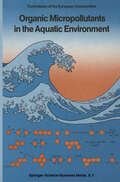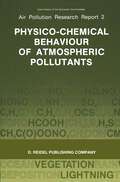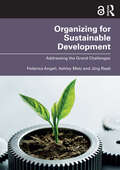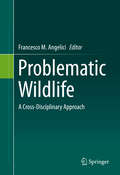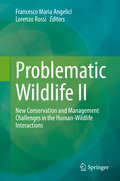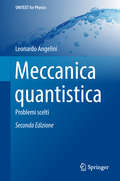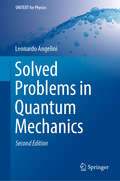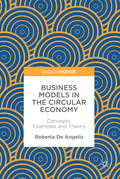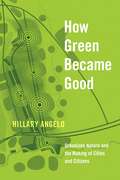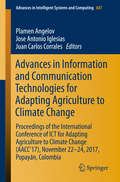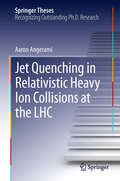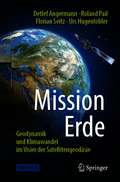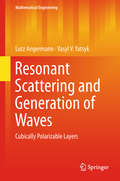- Table View
- List View
Asia's Clean Revolution: Industry, Growth and the Environment
by David Angel Michal RockThe world's environmental future will be determined in significant part by what happens in the rapidly industrialising and urban economies of Asia. The sheer scale of urban population and industrial growth in Asia - from Indonesia to China - and the energy and materials intensive character of the development process constitutes a dark shadow over the region's, and indeed the world's, environment. And yet this challenge is also an opportunity. Precisely because so much of the urban-industrial investment within developing Asia has yet to take place, the opportunity exists to shape a different development future - one that is far less energy, materials and waste intensive.Asia's Clean Revolution examines the prospects for and pathways to such a new trajectory. The book lays out a path-breaking vision of how developing economies might go beyond environmental regulation and put in place an array of policies and institutions that could integrate environmental, industrial and technological goals. These findings provide important input for negotiators considering climate change on a global scale.The book approaches the challenge of growth and environment in Asia in a novel way, by identifying six major transformational dynamics under way in the world today, and assessing whether these can be harnessed to the goal of improved environmental performance of industry.With a set of specially commissioned chapters from the leading authorities in North America and Asia, this ground-breaking book is the first to present concrete policy solutions to the looming crisis driven by large-scale urban-industrial growth in developing Asia.
Asia's Clean Revolution: Industry, Growth and the Environment
by David Angel Michal RockThe world's environmental future will be determined in significant part by what happens in the rapidly industrialising and urban economies of Asia. The sheer scale of urban population and industrial growth in Asia - from Indonesia to China - and the energy and materials intensive character of the development process constitutes a dark shadow over the region's, and indeed the world's, environment. And yet this challenge is also an opportunity. Precisely because so much of the urban-industrial investment within developing Asia has yet to take place, the opportunity exists to shape a different development future - one that is far less energy, materials and waste intensive.Asia's Clean Revolution examines the prospects for and pathways to such a new trajectory. The book lays out a path-breaking vision of how developing economies might go beyond environmental regulation and put in place an array of policies and institutions that could integrate environmental, industrial and technological goals. These findings provide important input for negotiators considering climate change on a global scale.The book approaches the challenge of growth and environment in Asia in a novel way, by identifying six major transformational dynamics under way in the world today, and assessing whether these can be harnessed to the goal of improved environmental performance of industry.With a set of specially commissioned chapters from the leading authorities in North America and Asia, this ground-breaking book is the first to present concrete policy solutions to the looming crisis driven by large-scale urban-industrial growth in developing Asia.
Beitrag zur Kenntnis der Enstatit-Bronzitfelse der Ultramafit-Masse von Kraubath (Sitzungsberichte der Österreichischen Akademie der Wissenschaften)
by Franz Angel Franz LaskovicGrundriß der Mineralparagenese
by Franz Angel Rudolf ScharizerDieser Buchtitel ist Teil des Digitalisierungsprojekts Springer Book Archives mit Publikationen, die seit den Anfängen des Verlags von 1842 erschienen sind. Der Verlag stellt mit diesem Archiv Quellen für die historische wie auch die disziplingeschichtliche Forschung zur Verfügung, die jeweils im historischen Kontext betrachtet werden müssen. Dieser Titel erschien in der Zeit vor 1945 und wird daher in seiner zeittypischen politisch-ideologischen Ausrichtung vom Verlag nicht beworben.
Planting for Pollinators: Creating a Garden Haven
by Ms Heather AngelPlanting for Pollinators is an easy-to-use gardening guide to help you encourage different types of insect pollinators into your garden.Insect pollinators not only bring joy to our gardens, they also provide an essential service for our planet. Without bees, flies, hoverflies, butterflies, moths and beetles, some of our favourite foods, flowers and plants would cease to exist. Whether you have a large garden, an urban balcony or just a window box, planting to encourage pollinators is a fantastic and surprisingly easy first step in creating a wildlife-friendly space. Planting for Pollinators features a wide range of plants, with guidance on the best ways to nurture lawns and verges, pollinator predation and tips on watching and photographing wildlife. Beautifully illustrated throughout with images from award-winning wildlife photographer Heather Angel, this essential guide will show you how plants communicate with insects, and why it's so important to protect our pollinators. Organised by season and featuring more than 100 plant species – including bulbs, annuals, perennials, shrubs and climbers – this practical guide will help you to discover the short- and long-term benefits of having a variety of pollinators visit your garden.
Planting for Pollinators: Creating a Garden Haven
by Ms Heather AngelPlanting for Pollinators is an easy-to-use gardening guide to help you encourage different types of insect pollinators into your garden.Insect pollinators not only bring joy to our gardens, they also provide an essential service for our planet. Without bees, flies, hoverflies, butterflies, moths and beetles, some of our favourite foods, flowers and plants would cease to exist. Whether you have a large garden, an urban balcony or just a window box, planting to encourage pollinators is a fantastic and surprisingly easy first step in creating a wildlife-friendly space. Planting for Pollinators features a wide range of plants, with guidance on the best ways to nurture lawns and verges, pollinator predation and tips on watching and photographing wildlife. Beautifully illustrated throughout with images from award-winning wildlife photographer Heather Angel, this essential guide will show you how plants communicate with insects, and why it's so important to protect our pollinators. Organised by season and featuring more than 100 plant species – including bulbs, annuals, perennials, shrubs and climbers – this practical guide will help you to discover the short- and long-term benefits of having a variety of pollinators visit your garden.
Plant Ethics: Concepts and Applications (Routledge Environmental Humanities)
by Angela Kallhoff, Marcello Di Paola and Maria SchörgenhumerLarge parts of our world are filled with plants, and human life depends on, interacts with, affects and is affected by plant life in various ways. Yet plants have not received nearly as much attention from philosophers and ethicists as they deserve. In environmental philosophy, plants are often swiftly subsumed under the categories of "all living things" and rarely considered thematically. There is a need for developing a more sophisticated theoretical understanding of plants and their practical role in human experience. Plant Ethics: Concepts and Applications aims at opening a philosophical discussion that may begin to fill that gap. The book investigates issues in plants ontology, ethics and the role of plants and their cultivation in various fields of application. It explores and develops important concepts to shape and frame plants-related philosophical questions accurately, including new ideas of how to address moral questions when confronted with plants in concrete scenarios. This edited volume brings together for the first time, and in an interdisciplinary spirit, contemporary approaches to plant ethics by international scholars of established reputation. It will be of great interest to students and scholars of Philosophy and Ethics.
Drylands Facing Change: Interventions, Investments and Identities (Earthscan Studies in Natural Resource Management)
by Angela Kronenburg García, Tobias Haller, Han van Dijk, Cyrus Samimi, Jeroen WarnerThis edited volume examines the changes that arise from the entanglement of global interests and narratives with the local struggles that have always existed in the drylands of Africa, the Middle East, and Central Asia and Inner Asia. Changes in drylands are happening in an overwhelming manner. Climate change, growing political instability, and increasing enclosures of large expanses of often common land are some of the changes with far-reaching consequences for those who make their living in the drylands. At the same time, powerful narratives about the drylands as ‘wastelands’ and their ‘backward’ inhabitants continue to hold sway, legitimizing interventions for development, security and conservation, informing re-emerging frontiers of investment (for agriculture, extraction, infrastructure), and shaping new dryland identities. The chapters in this volume discuss the politics of change triggered by forces as diverse as the global land and resource rush, the expansion of new Information and Communication Technologies, urbanization, the COVID-19 pandemic, and the spread of violent extremism. While recognizing that changes are co-produced by differently positioned actors from within and outside the drylands, this volume presents the dryland’s point of view. It therefore takes the views, experiences, and agencies of dryland dwellers as the point of departure to not only understand the changes that are transforming their lives, livelihoods, and future aspirations, but also to highlight the unexpected spaces of contestation and innovation that have hitherto remained understudied. This edited volume will be of much interest to students, researchers and scholars of natural resource management, land and resource grabbing, political ecology, sustainable development and drylands in general.
Natural Resources, Sustainability and Humanity: A Comprehensive View
by Angela Mendonca, Ana Cunha and Ranjan ChakrabartiShortly, this book is the written up-graded version of the topics discussed during the Small Meeting of the 2nd International School Congress: Natural Resources, Sustainability and Humanity, held in Braga, Portugal, 5-8 May 2010 with the diverse participation of scientists, educators and governmental representatives. The Earth hosts an immense ecosystem, colonized by millions of species for billions of years but only for a few tens of thousands of years by humans. Environmental history tells though that it was humankind that shaped the environment as no other species. History, geography, religion and politics among other reasons have differentiated populations with respect to access to safe food and water, education, health, and to space and natural resource utilization. The globalization era of trade, information and communication is shortening distances and increasing overall wealth, but, as is pointed out in this book, it is also contributing to the propagation of diseases, and to the modification or even destruction of native ecosystems by exotic invasive species.Man is the only species that has the perception of its history, evolution, of the consequences of its decisions, and that there is a future ahead. It is also the only species that has the potential to change it. This awareness can be a source of anxiety and contradictory behaviours, but it is also the key to changing attitudes towards the construction of a common sustainable home, by committed education, interdisciplinary approaches, mobilization and empowerment of people and political consonant actions.
Organic Micropollutants in the Aquatic Environment: Proceedings of the Sixth European Symposium, Held in Lisbon, Portugal, May 22–24, 1990
by G. Angeletti A. BjørsethMore than 10 years after the "First European Symposium on Organic Micropollutants in the Aquatic Environment", the "Sixth Symposium" was held in Lisbon (Portugal) from 22 to 24 May 1990. The Symposium was organised within the framework of the Concerted Action COST 641 * which is included in the Fourth R&D Programme on the Environment of the Commission of the European Communities expiring at the end of 1990. After restructuring the Concerted Action in 1984, particular attention has been devoted to fate and transformation of organic micropollutants in the aquatic environment. Therefore, a major aim of the Symposium was to review current studies and progress in these areas, besides more general aspects related to analytical methodologies and behaviour of pollutants during water treatment processes. This volume contains the plenary papers presented in the following sessions at the Symposium: - Multidisciplinary studies - Partitioning of organic micropollutants in the aquatic environment - Novel analytical techniques in environmental chemistry - Monitoring micropollutant - Degradation of organic micropollutants during field conditions - Reclamation of polluted ground water - Chemical and photochemical oxidation - Future of environmental chemistry. In addition, extended versions of posters are included, covering the four topics which are dealt within the four Working Parties forming the structure of the Concerted Action: 1. Analytical methodologies 2. Transport and distribution 3. Transformation reactions 4. Water treatment. We believe that the Proceedings give a good overview of current activities in these fields of research in Europe.
Physico-Chemical Behaviour of Atmospheric Pollutants: Proceedings of the Fourth European Symposium held in Stresa, Italy, 23–25 September 1986 (Tertiary Level Biology Ser.)
by G. Angeletti G. RestelliFourth European Symposium held in Stresa, Italy, September 23-25, 1986
Organizing for Sustainable Development: Addressing the Grand Challenges
by Federica Angeli Ashley Metz Jörg RaabThe Sustainable Development Goals (SDGs) recognize the increasingly complex, interdependent nature of societal and environmental issues for governments and business. Tackling such "grand challenges" requires the concerted action of a multitude of organizations and multiple stakeholders at different levels in the public, private, and non-profit sector.Organizing for Sustainable Development provides an integrated and comparative overview of the successes and failures of organizational efforts to tackle global societal issues and achieve sustainable development. Summarizing years of study by an interdisciplinary board of authors and contributors, this book provides readers with an in-depth understanding of how existing businesses and new hybrid organizations can achieve sustainable development to bring about an improved society, marking a key contribution to the literature in this field.Combining theoretical views with empirical approaches, the chapters in this book are highly relevant to graduate and undergraduate (multidisciplinary) programs in sustainable development, organization studies, development economics, development studies, international management, and social entrepreneurship.The Open Access version of this book, available at www.taylorfrancis.com, has been made available under a Creative Commons Attribution-NonCommercial (CC-BY) 4.0 license.
Organizing for Sustainable Development: Addressing the Grand Challenges
by Federica Angeli Ashley Metz Jörg RaabThe Sustainable Development Goals (SDGs) recognize the increasingly complex, interdependent nature of societal and environmental issues for governments and business. Tackling such "grand challenges" requires the concerted action of a multitude of organizations and multiple stakeholders at different levels in the public, private, and non-profit sector.Organizing for Sustainable Development provides an integrated and comparative overview of the successes and failures of organizational efforts to tackle global societal issues and achieve sustainable development. Summarizing years of study by an interdisciplinary board of authors and contributors, this book provides readers with an in-depth understanding of how existing businesses and new hybrid organizations can achieve sustainable development to bring about an improved society, marking a key contribution to the literature in this field.Combining theoretical views with empirical approaches, the chapters in this book are highly relevant to graduate and undergraduate (multidisciplinary) programs in sustainable development, organization studies, development economics, development studies, international management, and social entrepreneurship.The Open Access version of this book, available at www.taylorfrancis.com, has been made available under a Creative Commons Attribution-NonCommercial (CC-BY) 4.0 license.
Problematic Wildlife: A Cross-Disciplinary Approach
by Francesco M. AngeliciThis book provides insight into the instances in which wildlife species can create problems. Some species trigger problems for human activities, but many others need humans to save them and to continue to exist. The text addresses issues faced by economists and politicians dealing with laws involving actions undertaken to resolve the problems of the interaction between humans and wildlife. Here, the words ‘problematic species’ are used in their broadest sense, as may be appreciated in the short introductions to the various sections. At times, the authors discuss special cases while always extending the discussion into a more general and broad vision. At others, they present real cutting-edge analysis of ecological topics and issues. The book will be of interest to biologists, ecologists and wildlife managers involved in research on wildlife, parks, and environmental management, as well as to government departments and agencies, NGOs and conservation wildlife organizations. Even those in contact with nature, such as hunters, herders, and farmers, will be able to find a great deal of important information. Specific case studies are selected from among the most significant and prevalent cases throughout the world. A total of 26 papers have been selected for this book, written by zoologists, biologists and ecologists. Many have an interdisciplinary approach, with contributions by economists, criminologists, technical specialists, and engineers.
Problematic Wildlife II: New Conservation and Management Challenges in the Human-Wildlife Interactions
by Francesco Maria Angelici Lorenzo RossiIn a world where habitats are constantly changing and the impact of anthropization on the environment is increasingly intense, interactions between human and wildlife are becoming more and more complex. Some species pose problems for human activities while many others need to be helped in order to continue to exist. This book follows the first volume called 'Problematic Wildlife', edited by F.M. Angelici and published by Springer in 2016, which has had considerable success with readers and critics. The volume includes 21 chapters divided into 7 parts devoted specific topics which are approached in a multidisciplinary way. There are both review chapters and specific cases, always bearing in mind the interest for an international audience. The book is useful both for scientists, wildlife specialists, conservationists, zoologists, ecologists, university students, nature managers, and for those who live in contact with wildlife and its problems, such as farmers, shepherds, hunters, urban planners, and staff of parks and nature reserves. Its ultimate goal is to offer scientific and pragmatic approaches to manage each categories of problematic species.
Meccanica Quantistica: Problemi Scelti (UNITEXT for Physics)
by Leonardo AngeliniIn questa seconda edizione la scelta dei problemi presentati è stata ampliata con alcuni nuovi esercizi come i potenziali quadrati. La raccolta si arricchisce anche dell'aggiunta di due capitoli su metodi di approssimazione diversi dalla teoria perturbativa, approssimazione WKB e Variazionale. Questo libro è dedicato agli studenti che preparano l'esame scritto di un corso di Meccanica Quantistica e presenta problemi che possono essere risolti nei tempi normalmente dedicati agli esami scritti. Di riflesso questa raccolta può risultare molto utile anche ai docenti che devono proporre problemi ai loro studenti sia a lezione che per gli esami. Si assume che i contenuti del corso siano sostanzialmente identici a quelli di un tradizionale corso di Istituzioni di Fisica Teorica dei vecchi ordinamenti del corso di laurea in Fisica. Nei nuovi ordinamenti gli stessi argomenti sono stati, in generale, ripartiti su più corsi.Oltre a sondare la comprensione della materia e l'abilità di applicarla concretamente da parte dello studente, i problemi sono risolvibili in un tempo limitato utilizzando gli strumenti matematici che vengono normalmente forniti nei corsi per la laurea in Fisica. Le soluzioni sono fornite in modo dettagliato, eliminando i passaggi più semplici, per una maggiore fruibilità da parte degli studenti.
Solved Problems in Quantum Mechanics (UNITEXT for Physics)
by Leonardo AngeliniThis book presents a large collection of problems in Quantum Mechanics that are solvable within a limited time and using simple mathematics. The problems test both the student’s understanding of each topic and their ability to apply this understanding concretely. Solutions to the problems are provided in detail, eliminating only the simplest steps. No problem has been included that requires knowledge of mathematical methods not covered in standard courses, such as Fuchsian differential equations. The book is in particular designed to assist all students who are preparing for written examinations in Quantum Mechanics, but will also be very useful for teachers who have to pose problems to their students in lessons and examinations.
Business Models in the Circular Economy: Concepts, Examples And Theory
by Roberta De AngelisThis book focuses on the role of corporations in the transition towards an economy that works more in line with ecological limits. It is centred on business model innovation in the context of the circular economy, which is gaining consensus across business, policy and academic circles by proposing more resource efficient industrial processes. Interest in circular business models is growing within academic and practitioner literature yet the concept is not clearly understood, with potential negative consequences for theory building and practical implementation. Therefore, this book conceptualises circular business models and investigates their theoretical foundations in relation to the rationale for adopting them, drawing on circular economy, business model, strategic management and neo-institutional literature and secondary data.
Business Models in the Circular Economy: Concepts, Examples and Theory
by Roberta De AngelisThis book focuses on the role of corporations in the transition towards an economy that works more in line with ecological limits. It is centred on business model innovation in the context of the circular economy, which is gaining consensus across business, policy and academic circles by proposing more resource efficient industrial processes. Interest in circular business models is growing within academic and practitioner literature yet the concept is not clearly understood, with potential negative consequences for theory building and practical implementation. Therefore, this book conceptualises circular business models and investigates their theoretical foundations in relation to the rationale for adopting them, drawing on circular economy, business model, strategic management and neo-institutional literature and secondary data.
How Green Became Good: Urbanized Nature and the Making of Cities and Citizens
by Hillary AngeloAs projects like Manhattan’s High Line, Chicago’s 606, China’s eco-cities, and Ethiopia’s tree-planting efforts show, cities around the world are devoting serious resources to urban greening. Formerly neglected urban spaces and new high-end developments draw huge crowds thanks to the considerable efforts of city governments. But why are greening projects so widely taken up, and what good do they do? In How Green Became Good, Hillary Angelo uncovers the origins and meanings of the enduring appeal of urban green space, showing that city planners have long thought that creating green spaces would lead to social improvement. Turning to Germany’s Ruhr Valley (a region that, despite its ample open space, was “greened” with the addition of official parks and gardens), Angelo shows that greening is as much a social process as a physical one. She examines three moments in the Ruhr Valley's urban history that inspired the creation of new green spaces: industrialization in the late nineteenth century, postwar democratic ideals of the 1960s, and industrial decline and economic renewal in the early 1990s. Across these distinct historical moments, Angelo shows that the impulse to bring nature into urban life has persistently arisen as a response to a host of social changes, and reveals an enduring conviction that green space will transform us into ideal inhabitants of ideal cities. Ultimately, however, she finds that the creation of urban green space is more about how we imagine social life than about the good it imparts.
How Green Became Good: Urbanized Nature and the Making of Cities and Citizens
by Hillary AngeloAs projects like Manhattan’s High Line, Chicago’s 606, China’s eco-cities, and Ethiopia’s tree-planting efforts show, cities around the world are devoting serious resources to urban greening. Formerly neglected urban spaces and new high-end developments draw huge crowds thanks to the considerable efforts of city governments. But why are greening projects so widely taken up, and what good do they do? In How Green Became Good, Hillary Angelo uncovers the origins and meanings of the enduring appeal of urban green space, showing that city planners have long thought that creating green spaces would lead to social improvement. Turning to Germany’s Ruhr Valley (a region that, despite its ample open space, was “greened” with the addition of official parks and gardens), Angelo shows that greening is as much a social process as a physical one. She examines three moments in the Ruhr Valley's urban history that inspired the creation of new green spaces: industrialization in the late nineteenth century, postwar democratic ideals of the 1960s, and industrial decline and economic renewal in the early 1990s. Across these distinct historical moments, Angelo shows that the impulse to bring nature into urban life has persistently arisen as a response to a host of social changes, and reveals an enduring conviction that green space will transform us into ideal inhabitants of ideal cities. Ultimately, however, she finds that the creation of urban green space is more about how we imagine social life than about the good it imparts.
Advances in Information and Communication Technologies for Adapting Agriculture to Climate Change: Proceedings of the International Conference of ICT for Adapting Agriculture to Climate Change (AACC'17), November 22-24, 2017, Popayán, Colombia (Advances in Intelligent Systems and Computing #687)
by Plamen Angelov Jose Antonio Iglesias Juan Carlos CorralesThis book presents novel communication technology solutions to address the effects of climate change and climate variability on agriculture, with a particular focus on those that increase agricultural production. It discusses decision support and early warning systems for agriculture; information technology (IT) supporting sustainable water management and land cover dynamics; predictive of crop production models; and software applications for reducing the effects of diseases and pests on crops. Further topics include the real-time monitoring of weather conditions and water quality, as well as food security issues. Featuring the proceedings of the International Conference of ICT for Adapting Agriculture to Climate Change (AACC’17), held on November 22–24, 2017, in Popayán, Colombia, the book represents a timely report and a source of new ideas and solutions for both researchers and practitioners active in the agricultural sector around the globe.
Jet Quenching in Relativistic Heavy Ion Collisions at the LHC (Springer Theses)
by Aaron AngeramiThis thesis presents the first measurements of jets in relativistic heavy ion collisions as reported by the ATLAS Collaboration. These include the first direct observation of jet quenching through the observation of a centrality-dependent dijet asymmetry. Also, a series of jet suppression measurements are presented, which provide quantitative constraints on theoretical models of jet quenching. These results follow a detailed introduction to heavy ion physics with emphasis on the phenomenon of jet quenching and a comprehensive description of the ATLAS detector and its capabilities with regard to performing these measurements.
Mission Erde: Geodynamik und Klimawandel im Visier der Satellitengeodäsie
by Detlef Angermann Roland Pail Florian Seitz Urs HugentoblerWoher weiß Ihr Handy, wo Sie gerade unterwegs sind? Wie verändert sich unser Planet aufgrund von geodynamischen Prozessen und dem fortschreitenden Klimawandel? Wie können diese Veränderungen präzise aus dem Weltraum vermessen werden, um verlässliche Aussagen etwa über das Abschmelzen der Eisschilde oder die Bedrohung von Küstenregionen durch den steigenden Meeresspiegel zu erhalten? Das vorliegende Sachbuch gibt Antworten auf diese gesellschaftlich relevanten Fragen. Es richtet sich an interessierte Laien, die mehr über unseren faszinierenden Planeten erfahren wollen, aber auch an Fachexperten naturwissenschaftlicher Disziplinen. Sie werden mitgenommen auf eine spannende Zeitreise von den ersten Vermessungen in der Antike bis in das Zeitalter der Satelliten, die uns die weltweite Bestimmung von extrem genauen Positionen und eine globale Sicht auf unseren Heimatplaneten ermöglichen. Anhand anschaulicher Beispiele wird vermittelt, wie tief die globale Positionierung und Navigation mit Satelliten unseren Alltag durchdrungen haben, und welche fundamentalen Beiträge die Geodäsie als die Wissenschaft von der Vermessung der Erde zum Verständnis des Erdsystems und zur Bestimmung der Auswirkungen des Klimawandels liefert.Mit Interviewbeiträgen von Günter Hein, Harald Lesch und Stefan Rahmstorf
Resonant Scattering and Generation of Waves: Cubically Polarizable Layers (Mathematical Engineering)
by Lutz Angermann Vasyl V. YatsykThis monograph deals with theoretical aspects and numerical simulations of the interaction of electromagnetic fields with nonlinear materials. It focuses in particular on media with nonlinear polarization properties. It addresses the direct problem of nonlinear Electrodynamics, that is to understand the nonlinear behavior in the induced polarization and to analyze or even to control its impact on the propagation of electromagnetic fields in the matter. The book gives a comprehensive presentation of the results obtained by the authors during the last decade and put those findings in a broader, unified context and extends them in several directions.It is divided into eight chapters and three appendices. Chapter 1 starts from the Maxwell’s equations and develops a wave propagation theory in plate-like media with nonlinear polarizability. In chapter 2 a theoretical framework in terms of weak solutions is given in order to prove the existence and uniqueness of a solution of the semilinear boundary-value problem derived in the first chapter. Chapter 3 presents a different approach to the solvability theory of the reduced frequency-domain model. Here the boundary-value problem is reduced to finding solutions of a system of one-dimensional nonlinear Hammerstein integral equations. Chapter 4 describes an approach to the spectral analysis of the linearized system of integral equations. Chapters 5 and 6 are devoted to the numerical approximation of the solutions of the corresponding mathematical models. Chapter 7 contains detailed descriptions, discussions and evaluations of the numerical experiments. Finally, chapter 8 gives a summary of the results and an outlook for future work.
